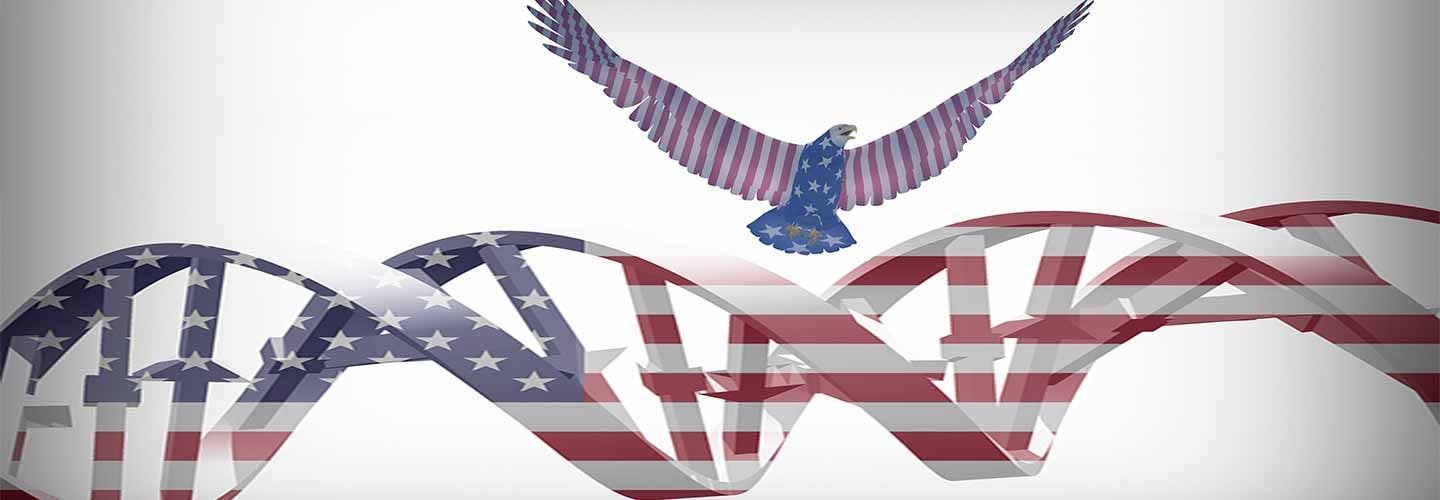PTSD – The Wounds that Just Won’t Heal
- Home
- Blog

Wounded Warriors and PTSD Genes: FKBP5, MTHFR, OXTR, CRHR1, CACNA1C, SLC6A4, BDNF, and COMT
Second Opinion: Session Four
DNA+Environment+Triggers+Chance = Response to Trauma
How the Environment and Triggers of War Trigger PTSD
– Bruce Alan Kehr, M.D.
Reader: How fortunate are we to be living in the United States of America? We take so much for granted living in a “free state” when there are so many “fear states” that exist throughout the world. And without a doubt, we would not exist as a free state if it were not for the men and women who serve in our armed forces, or the veterans who formerly served. Every day they put their lives on the line to defend our freedom, so that we can go about learning and growing and pursuing our dreams. If you see a soldier in uniform while you are out and about, please walk up to them and thank them for their service. It is one of the most gratifying experiences you can have. And in honor of Veterans Day, this week we will address that debilitating disease known as PTSD—Post-Traumatic Stress Disorder.
PTSD: Why Some Suffer While Others Don’t
PTSD is both debilitating and frustratingly common: To just give you a brief sampling of statistics proving this out, the U.S. Department of Veterans Affairs estimates that the disease afflicts almost 31 percent of Vietnam veterans, as many as 10 percent of Gulf War (Desert Storm) veterans, and 11 percent of veterans of the war in Afghanistan. Why do some combat veterans develop PTSD, while others with comparable experiences do not? Their genetic predispositions may provide a clue. The genetic variants associated with higher rates of PTSD are many: FKBP5, MTHFR, OXTR, CRHR1, CACNA1C, SLC6A4, BDNF, COMT and more. What many of these variants have in common is that they help to regulate what is known as the hypothalamic pituitary adrenal or HPA Axis. This is the part of our body that regulates our “fight, flight or freeze” responses. Here is a picture that captures this system:
Marcy’s Story*: A PTSD Genetic Case Study
To demonstrate to you just how much of a role our genes can play in PTSD, I want to share Marcy’s story. When Marcy first came in to see me, she was, in my kids’ parlance, a “hot mess.” This highly intelligent 62 year old woman was suffering from depression, panic attacks, cognitive impairment, social anxiety, multiple phobias, insomnia, nightmares, unstable moods, and racing thoughts. She had been a talented physical therapist and wished she could continue working, but her illness had become debilitating, leading her instead into early retirement. What triggered her symptoms? A father who served in World War II, a brother who served in Vietnam, and her own service treating Wounded Warriors returning from Iraq and Afghanistan.
When Marcy was growing up, she learned that her father had suffered severe trauma in World War II when his glider was shot down. The Germans opened fire on the plane and everyone inside, including his best friend, was killed—everyone but him. Her father “played dead” and the enemy troops moved on. His best friend was literally cut in half by the hail of bullets and the trauma of crash landing. Marcy’s father was never the same again and was depressed and remote from her throughout childhood. Not dissimilarly, Marcy’s older brother returned from Vietnam a ghost of his former self. He quickly became involved with drugs and other high risk behaviors. Deeply touched by these events, Marcy went to work at a Veterans Hospital as a physical therapist and eventually became emotionally overwhelmed by the emotional and physical challenges of the wounded warriors that she treated. The final straw was the sudden death of her father. As it turned out, trying to help the Wounded Warriors in her life had resulted in her own deep wounds—wounds that she could no longer ignore.
“Doctor Kehr, I just can’t take it anymore. I am haunted by so many memories and images of my father during the war, from all of the stories he told us. I have nightmares about him on the battlefield, which began when my brother recently overdosed and was admitted to the VA psych unit. I am having mood swings, racing thoughts, am unable to sleep and my functioning is declining by the day. What can we do?” I diagnosed Marcy with a mixed state depression and PTSD and performed both Genomind Pharmacogenetic (PGx) Test and Mindful DNA tests, along with blood testing. Here is what we found: Marcy had variants in all of these genes associated with higher rates of mood instability and PTSD— FKBP5, BDNF, MTHFR, OXTR, CRHR1, CACNA1C, and SLC6A4.
Wow! What an amazing treasure trove of genes to “tweak” to help her feel better! And so, armed with Laozi’s expression, “A journey of a thousand miles begins with a single step,” we set out to help Marcy feel better and function more effectively. The first step was to address her depression and mood instability by epigenetically modifying her CACNA1C, BDNF and MTHFR gene variants, and so we implemented Rexulti, daily physical exercise, and l-methylfolate, respectively. One month later we added Namenda which also helps regulate overactive calcium channel activity to stabilize and improve mood and enhance cognition. Initial responses to these interventions were encouraging, but she was still quite symptomatic, so we added the calcium channel blocker nimodipine (she also had hypertension), omega 3, and magnesium over a period of two months, all of which also block excessive calcium channel activity. With each incremental step she began to feel more and more like her old self. She resumed her sculpting, and socializing with her family, but remained quite phobic about socializing with friends and new acquaintances, and driving. Her improvement had plateaued, and so we next addressed her FKBP5 and CRHR1 genes with supplemental vitamin d (her blood levels were low) N-Acetylcysteine (NAC) and ashwagandha. Over the next six months her improvement was quite remarkable, and yet she still suffered from anticipatory anxiety, social anxiety and driving phobia, albeit less than before. We had one more gene to tweak—OXTR—so we then added a newly available product—intranasal Oxytocin nasal spray—and this final step was a bit like magic, almost miraculous. She reported, “It makes me feel better, more like I used to feel, more like my old self where I was more confident in my own skin. I don’t feel that anxiety or depression anymore!”
Wow again!
With a patient, persistent, stepwise approach, Marcy became almost “cured.” My only hesitation is that these changes in her stress response and anxiety levels remain somewhat newfound, and so time will tell. But what this illustrates is that a progressive modification of the pathways controlled by each and every one of her genetic variants began to incrementally improve her condition, and that ultimately, the whole became greater than the sum of the parts. She is considering returning to work part-time but remains unsure, and so we continue to work on this issue, and troubles she is having with her adult children, in her psychotherapy.
In his Pulitzer Prize winning book, The Emperor of all Maladies, Dr. Siddhartha Mukherjee describes the future of cancer treatment: “In 2050, Atossa (a Persian queen with breast cancer diagnosed in 500 BC) will arrive at her oncologist’s clinic with a thumb drive containing the entire sequence of her cancer’s genome, identifying every mutation in every gene. The mutations will be organized into key pathways. An algorithm might identify the pathways that are contributing to the growth and survival of her cancer. Therapies will be targeted against these pathways to prevent a relapse of the tumor after surgery. She will begin with one combination of targeted drugs, expect to switch to a second cocktail when her cancer mutates, and switch again when the cancer mutates again. She will likely take some form of medicine, whether to prevent, cure, or palliate her illness, for the rest of her life.” Atossa receives targeted maintenance therapy with a drug exquisitely tailored to the genetic profile of her tumor and enjoys a normal lifespan, cancer free.
In psychiatry, there is no need to wait until 2050 to begin to implement this type of approach. “Fringe Science?” No. “Frontier Science?” Yes, with a knowledge base growing more powerful and precise every day.
Related Information
- Learn about Genetic Testing
- Learn about Potomac Psychiatry
- Meet Our Doctors
- Contact Potomac Psychiatry
.png?width=144&height=144&name=Untitled%20design%20(34).png)



